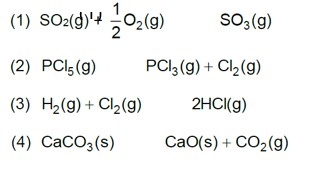7.77. Assertion: Higher order ionization constants (Ka2, Ka3) are higher than the lower order ionization constant (Ka1) of a polyprotic acid.
Reason: It is more difficult to remove a positively charged proton from a negative ion due to electrostatic forces.
7.77. Assertion: Higher order ionization constants (Ka2, Ka3) are higher than the lower order ionization constant (Ka1) of a polyprotic acid.
Reason: It is more difficult to remove a positively charged proton from a negative ion due to electrostatic forces.
-
1 Answer
-
(d) Higher order ionization constants (Ka2, Ka3) are smaller than the lower order ionization constant (Ka1) of a polyprotic acid. The reason for this is that it is more difficult to remove a positively charged proton from a negative ion due to electrostatic forces. This can be seen in the case of removing a proton from the uncharged H2CO3 as compared from a negatively charged HCO3–.Similarly, it is more difficult to remove a proton from a doubly charged HPO42– anion as compared to H2PO4–.
Similar Questions for you
0.01 M NaOH,
M = 1 * 10-2

pOH = 2
pH = 2
Kp = Kc (RT)Dng
36 * 10–2 = Kc (0.0821 * 300)–1
Kc = 0.36 * 0.0821 * 300 = 8.86 » 9
A(g) ->B(g) + (g)
Initial moles n 0 0
Eqb. moles n(1 – a) na
total moles =
Eqb. pressure
On increasing pressure, equilibrium moves in that direction where number of gaseous moles decreases.
Taking an Exam? Selecting a College?
Get authentic answers from experts, students and alumni that you won't find anywhere else
Sign Up on ShikshaOn Shiksha, get access to
- 65k Colleges
- 1.2k Exams
- 679k Reviews
- 1800k Answers


